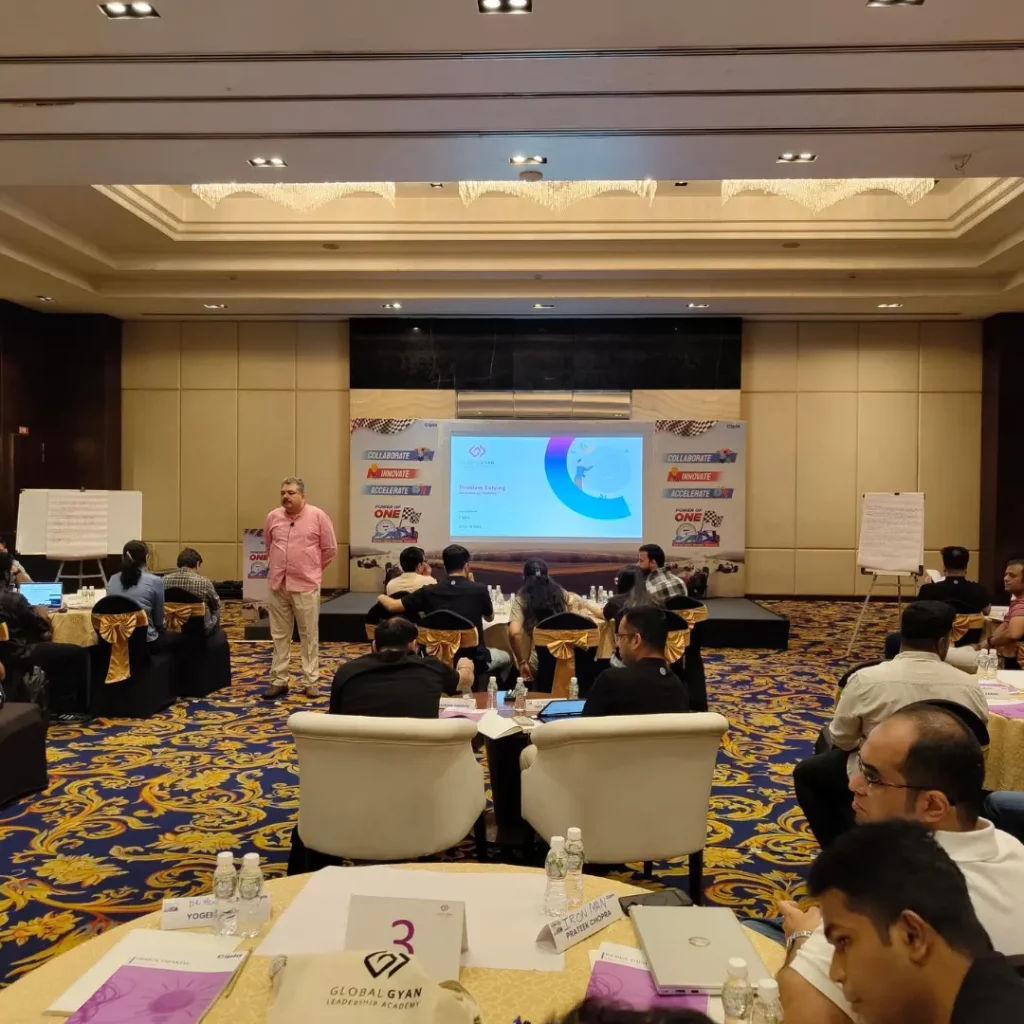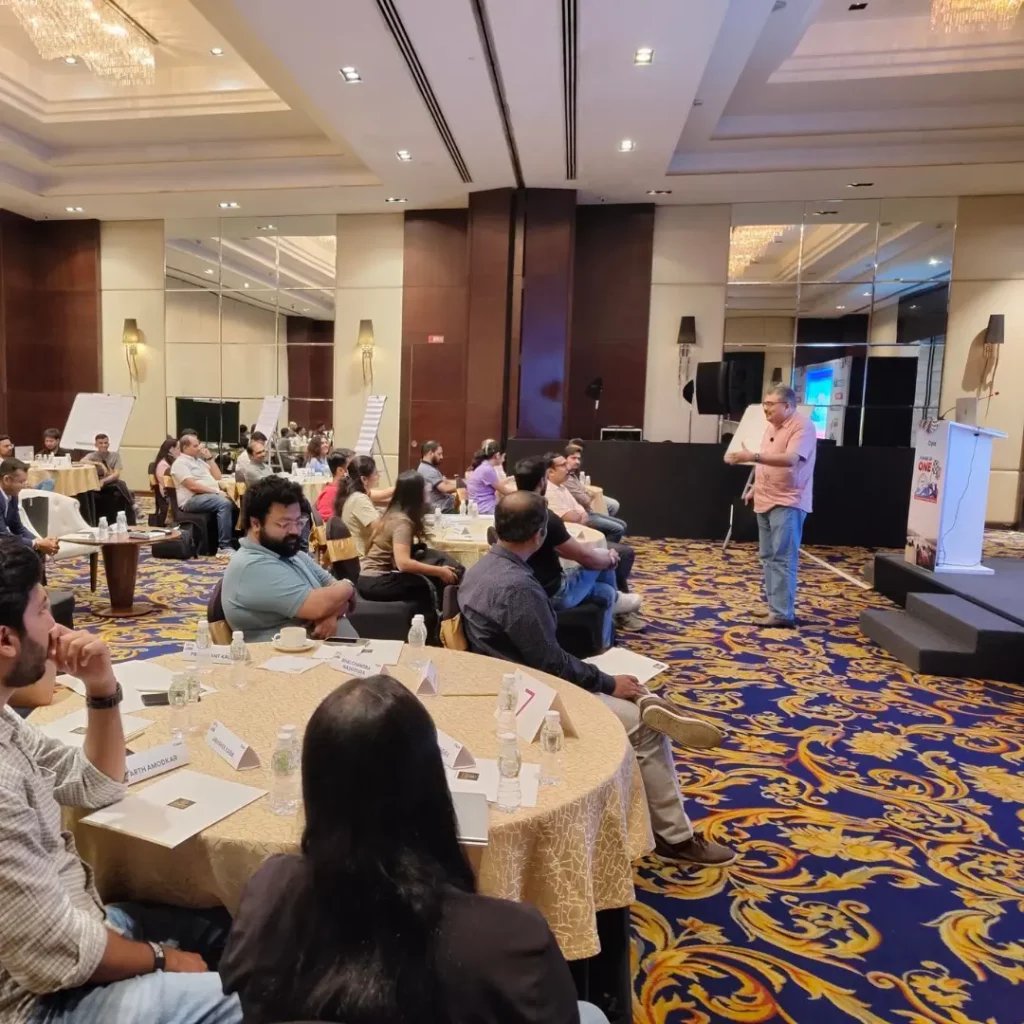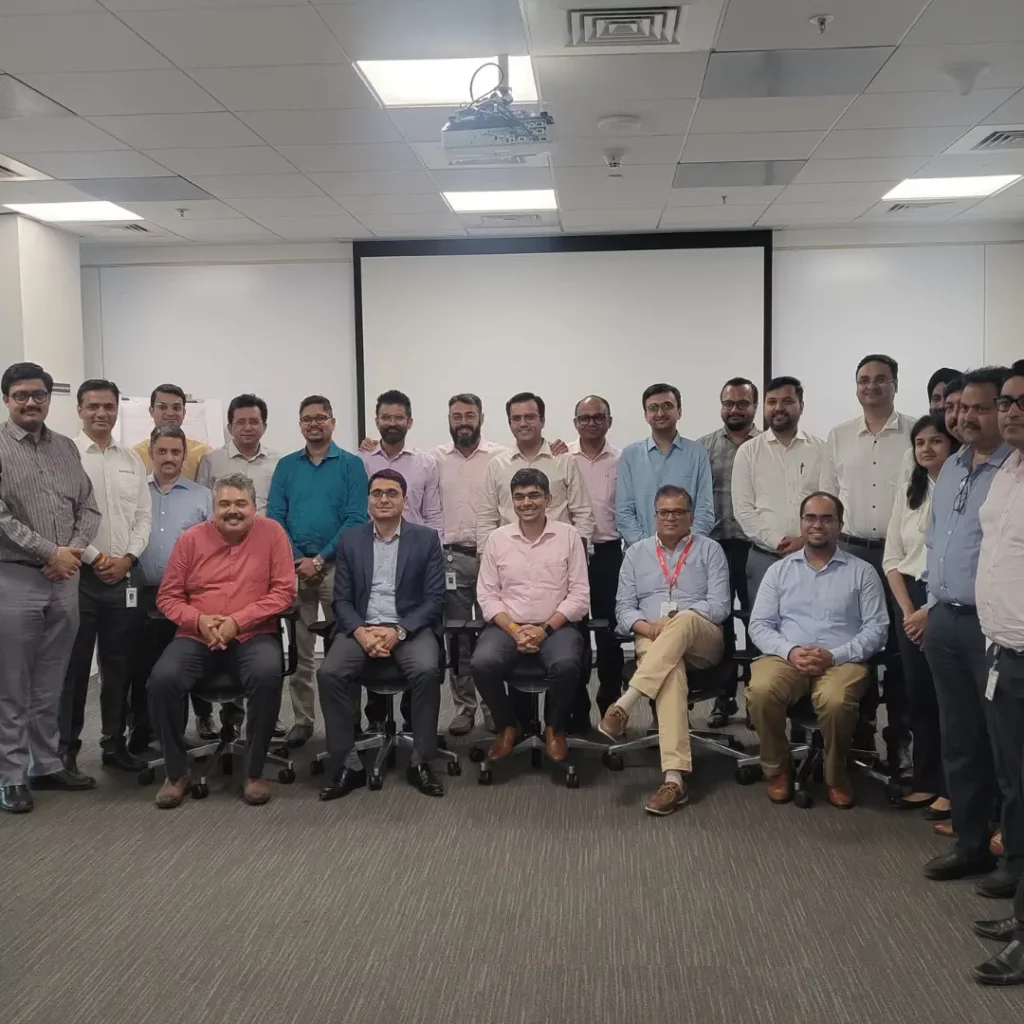Design Thinking | 2-Day Capability Lab @ a Leading Indian Pharma Enterprise | 2024


Program Overview
When you get senior managers from strategy, marketing, field services, and digital in the same room, magic can happen—if you give them the right framework to work with. That’s exactly what we set out to do in this leadership offsite, convened by our Strategy, M&A, and Digital Transformation team. The goal wasn’t just to talk about innovation, but to actually unlock it through Design Thinking.
We’ve all been in workshops that feel more like theoretical exercises than real problem-solving. This wasn’t one of those. Every activity was built around actual business challenges our teams were facing, because the best way to learn Design Thinking is to use it on problems that actually matter.
The real win was watching cross-functional collaboration come alive. When you give people from different disciplines a shared language and methodology, they stop talking past each other and start building on each other’s ideas. That’s where breakthrough solutions come from.
2 Day
Workshop
45+
Participants
Senior
Managers
In-person
Mode
Digital Learning
& Pre-Work
Group Coaching
Skill Building
Virtual
Group Reviews
Key Themes Covered
1. Introduction to Design Thinking
We started with the fundamentals—when to use Design Thinking, when not to, and how it fits with other problem-solving approaches. Real business cases helped everyone understand where this methodology adds the most value.
2. Customer Empathy & Mapping
Here’s where most teams struggle—they assume they know what customers want. We taught participants how to use empathy tools to truly understand both internal and external customer needs, often uncovering insights that completely reframe the problem.
3. Framing the Right Problem
Half the battle is making sure you’re solving the right problem. We spent serious time on defining problems that are both solvable and high-impact, because brilliant solutions to the wrong problems don’t help anyone.
4. Ideation & Divergent Thinking
This is where the fun happened. We used creative thinking techniques to push teams beyond their first, obvious ideas and explore solution spaces they’d never considered. The goal was to challenge conventional thinking and find breakthrough approaches.
5. Prototyping & Success Metrics
Ideas without execution are just dreams. We helped teams translate their concepts into quick, testable prototypes and define KPIs that would actually measure real impact, not just activity.
6. Application & Team Presentations
The proof was in the pudding. Teams worked through complete Design Thinking cycles on real scenarios, then presented their outcomes in pitch format. By the end, everyone had experienced the full methodology firsthand.
Looking to build a customized leadership journey? We're here to help!
- Tailored Corporate Leadership Programs
- Outcome-Oriented Learning
- Gamified Assessments & Experiential Engagements




















Responses